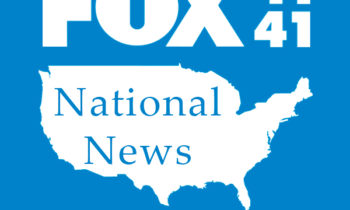
Earlier today, after six months of squabbling and kicking the can down the road, Congress finally passed its final spending package that will fund the government for the current fiscal year and prevent a partial shutdown.
Roughly 70% to 80% of the government was headed toward a shutdown after midnight. The other 20% was already approved in a $460 billion spending package earlier this month.
Each fiscal year, Congress must approve 12 key appropriations to fund federal agencies. The 2023-24 fiscal year began on Oct. 1.
The appropriations approved today include funding for Health and Human Services along with the departments of State, Justice, Defense, Commerce and Labor. About half of the package goes toward Homeland Security. The 1,000-page spending bill was introduced on Thursday. The House bypassed its rule that typically requires 72 hours between a bill’s introduction and voting to approve the package on Friday morning. The Senate approved it shortly after the midnight deadline passed.
Had Congress failed to approve the appropriations or pass a stopgap, part of the government would have shut down for more than a couple of hours. That would mean some federal workers would have been furloughed, while others would have had to continue working without pay. For example, the Internal Revenue Service (IRS) and the Transportation Security Administration (TSA) would still be technically functional, but many employees would be furloughed, which could result in service delays. But programs like Social Security, as well as Medicare and Medicaid, would continue uninterrupted.
How did we get here?
As a refresher, last year a fiercely divided Congress passed two continuing resolutions that extended funding for the 2023-24 fiscal year at 2022-23 levels so government operations wouldn’t be disturbed. But the continuing resolution in November split the appropriations (roughly 80% and 20%) and set two separate deadlines: Jan. 19 and Feb. 2.
The Jan. 19 deadline was for the departments of Transportation, Housing and Urban Development, Agriculture, and Energy. The Feb. 2 deadline was for the departments of State, Justice, Defense, Commerce, and Labor, as well as Health and Human Services.
Before that first Jan. 19 deadline hit, Congress passed a third continuing resolution that pushed back both deadlines: Jan. 19 to March 1, and Feb. 2 to March 8. Once again a shutdown was avoided, but not for long. On March 1, the deadlines were moved again: March 1 to March 8, and March 8 to March 22.
On March 8, Congress finally reached a partial agreement and sent six appropriation bills to President Biden to sign. Those appropriations fund about 20% of the government, including the departments of Transportation, Housing and Urban Development, and Agriculture, as well as military and veterans programs. The bundle also included spending for energy and water development and related agencies.
The government is now fully funded for the 2023-2024 fiscal year. But the breather will be short: In six months, in the thick of election season, the process to approve appropriations for the next fiscal year will start all over again.
More From NerdWalletSelling Your Home Could Boost Your Nest Egg — But Is It Worth It?Fed Chair Powell: Rate Cut Risks Are ‘Two-Sided’Wendy’s Isn’t the First: Dynamic Pricing Is Everywhere
Anna Helhoski writes for NerdWallet. Email: anna@nerdwallet.com. Twitter: @AnnaHelhoski.
The article Government Shutdown Threat Finally Put to Rest — For Now originally appeared on NerdWallet.


